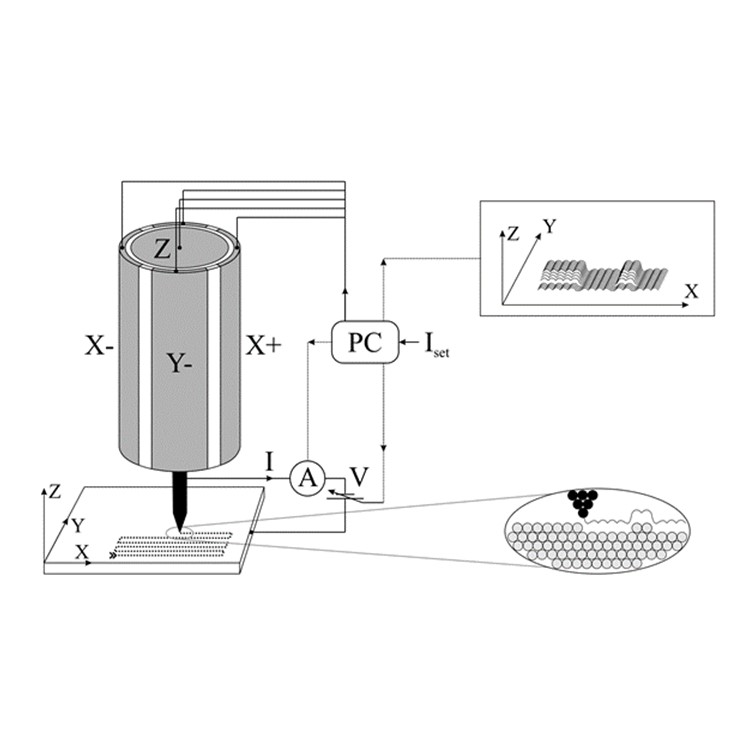

In the scanning tunneling microscope (STM), a sharp metallic tip is brought close to an electrically conductive surface biased at a voltage Vts. When the tip-surface separation dts is small enough, a potential barrier for the electrons reduces to the point when quantum tunneling occurs. The tunneling electrons form electric current whose amplitude exponentially decreases with dts. The current is used in the STM feedback to position the tip in a precise distance above the surface. Employing the exponentially dependent tunneling current in the feedback is the key factor that made STM the first method with a real-space atomic resolution and one of the most widespread methods in the present-day surface science. The amazing spatial resolution of the STM and the relative simplicity of the method triggered the evolution of further SPM methods such as non-contact atomic force microscopy (nc-AFM).

Investigations of catalytic reactions on the surfaces and the attempt to bridge the pressure and material gap between ultra-high vacuum (UHV) and industrial applications require an ultra-stable and reliable scanning probe microscope (SPM) able to operate in extreme conditions. Near-ambient pressure STM/AFM system built upon the SPM Aarhus design allows for the operation between UHV and 100 mbar, while preserving the cleanliness of studied surfaces during the preparation and the measurement. For this the SPM Aarhus head is mounted inside of an in-situ reactor cell made of inert materials. By doing so, only the inside of a little reactor cell is flooded with the gas, leaving the main vacuum chamber intact. Fast on-site switch between UHV and near ambient pressure applications is possible by opening a lid on top of the reactor cell. A lamp heater for high temperature applications is mounted directly on the lid allowing imaging at temperatures exceeding 850 K in UHV and 550 K at 10 mbar. In-situ tip/sensor preparation by ion sputtering is feasible when the lid of the reactor is open. A direct in-situ optical access to the sample during measurements at near ambient pressures can be used for investigation of photo catalytic reactions. Both STM tips as well as the KolibriSensor™ can be used with the system.

| peter.matvija@mff.cuni.cz | |
| +420-95155-2749 +420-95155-2671 |
Lectures, interesting facts and information in the field of nanomaterials and hydrogen technology.
© 2021 Matematicko-fyzikální fakulta Univerzity Karlovy.
Všechna práva vyhrazena. | Cookies